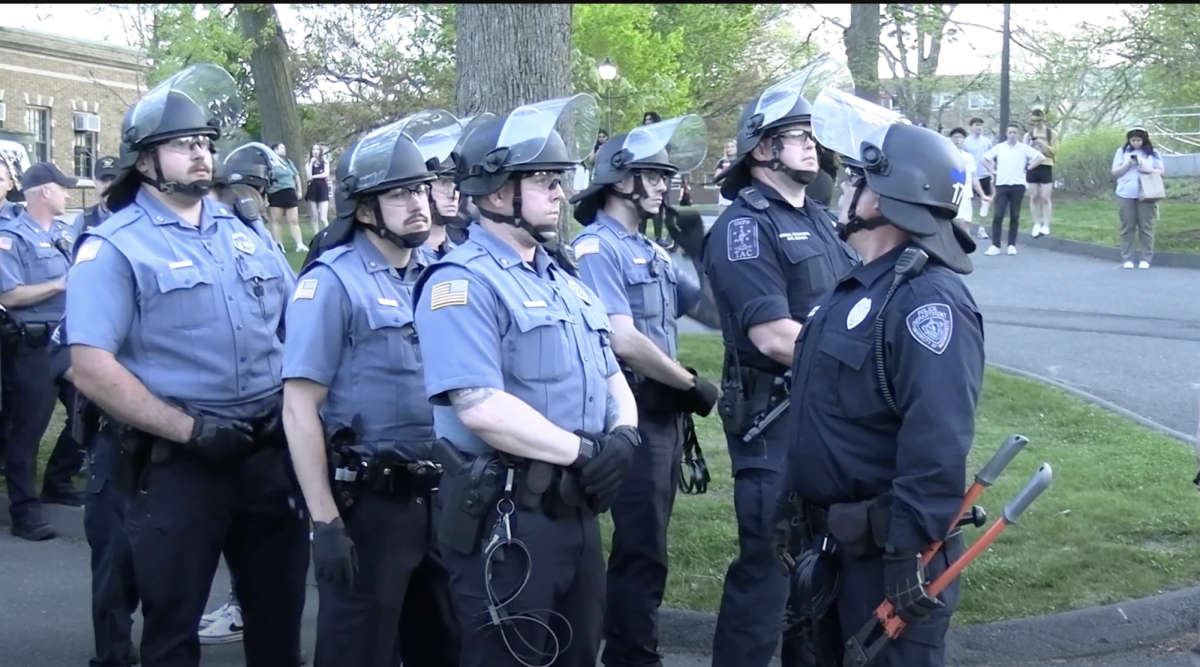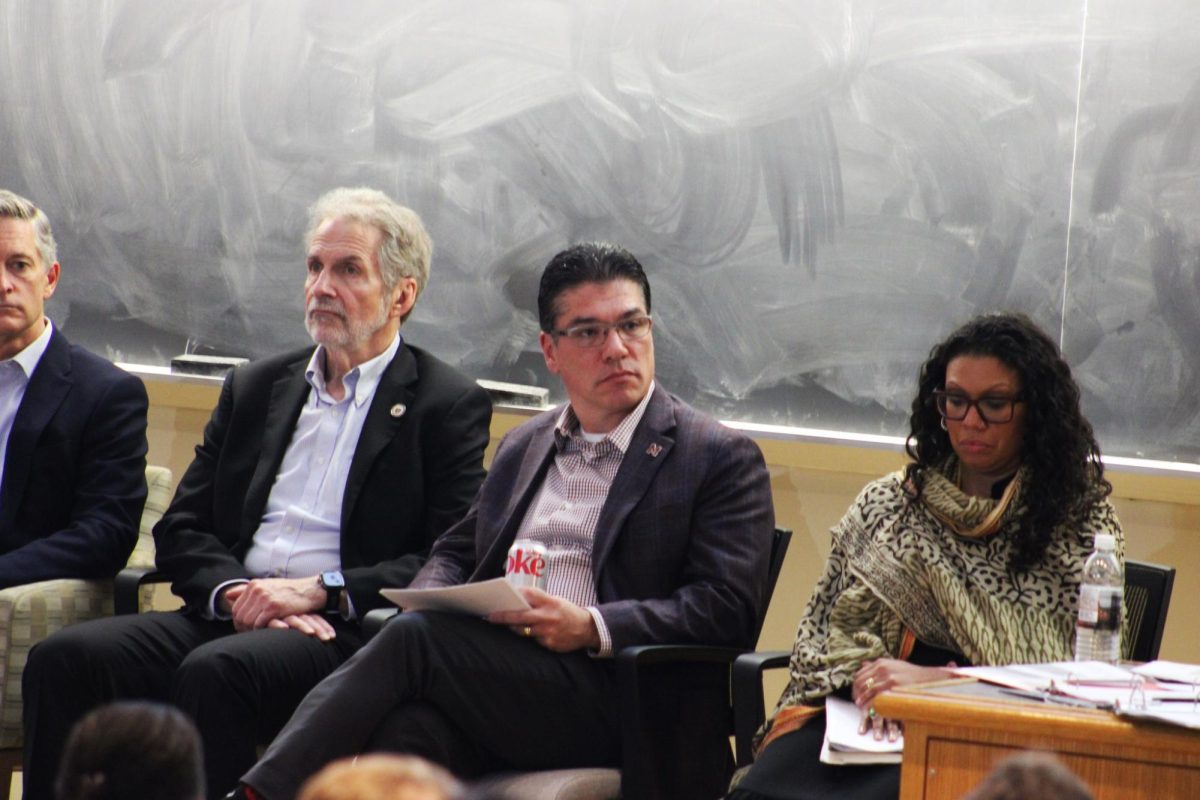
(Andy Castillo/Daily Collegian)
By now, it’s little secret that the University of Massachusetts is proposing a new $250 Information Technology student fee that, if approved, would apply to all undergraduate students attending the University.
Within the last two weeks, students have spoken out against the proposed fee in the form of a petition and the “UMass IT Fee Challenge,” while there was also a detailed two-page memo from Student Government Association President Sïonan Barrett in late May.
It’s clear – and presumably expected – that some students are unhappy with an additional cost. But a common sentiment among students I’ve spoken with is that there is confusion over specific details of the fee.
The following is an attempt in clearer terms to explain the fee, with the help of the IT department’s Frequently Asked Questions page and interviews with both Barrett and UMass spokesperson Ed Blaguszewski.
What is the fee?
All undergraduate students will pay $30 a month ($250 annually) to contribute to modernizing the campus network. But here’s where it gets tricky.
Currently, all residential students on campus pay a residential technology fee, which the site lists as $252. This fee pays for some dated types of infrastructure and also helps pay off the school’s infrastructure debt.
The new fee is separate from this, which means any undergraduate student living on campus will have to pay both the residential technology fee, which is already in place, and the new IT fee, according to Blaguszewski. That means undergraduates who wish to live on campus will pay roughly $500 a year to support various areas of the campus network and infrastructure.
Why is the fee believed to be necessary?
According to the IT help page, more than 3,000 students filed complaints about the campus network in the Fall 2014 semester alone. It claims many more went unreported and cites a need to adapt to the student body, as the average student has three devices which can connect to the campus network at one time.
“The new fee really gets to the core of improving the breadth of the network,” Blaguszewski said.
“It provides students additional access and speed. Security is also really important here. Any IT administrator at any university will tell you that university networks, as well as any place else, are really under relentless cyber attacks. You really need to invest in your infrastructure to keep up with that.”

(Collegian File Photo)
For students, the majority of the $250 fee would contribute to “support campus networking—both wired and wireless services, including infrastructure improvements to accommodate rapid growth,” according to the help page.
Barrett agreed, saying she understood that the fee was necessary, and that she believes the security and networking issues were a priority.
“A lot of information and reasoning behind the fee is not able to necessarily be shared,” she said. “That’s because there are some security and networking issues that need to be fixed. That’s a little bit more urgent.”
Is anyone else paying for this?
Yes. IT estimated that the total modernization of the campus network will cost $85 million. According to the help page, the student fee will contribute $5.1 million annually to the modernization.
Chancellor Kumble Subbaswamy has already pledged $30 million in capital funds, which Barrett said will be paid over three years and go toward upgrading network security. The school also expects to receive private gifts, such as a recent $1.5 million donation.
The school hopes to fundraise 75 percent of the total cost ($64 million) to support the modernization.
Why are students finding out about this now?
This is the part where it gets murky.
According to Blaguszewski, IT Vice Chancellor Julie Buehler and her team engaged in student outreach beginning in January. He said Buehler engaged in a “sequence” of meetings with various student leaders to discuss options regarding the proposed fee and that Buehler spoke with student leaders in “good faith.”
He provided the Collegian with a list of consultations done by Buehler and her team with various groups on campus, broken down by month. In addition, there were two stories published in the Collegian on April 15 and May 28 regarding the topic.
Yet Barrett wrote in her memo that many students found out about the fee for the first time in mid-May via a campus-wide email. She told the Collegian that previous SGA leadership, which met with Buehler in January regarding the proposed fee, never passed any information along to her.
Blaguszewski explained that information can be lost when administration works with student leadership that has natural end-of-the-year turnover.
“What occurs on occasion is what we do is we work with the student leadership in place at the time,” he said.
“And what happens is when there are elections new people come in. And if you read the comments from the new SGA leadership, they’re saying ‘Well they may have wanted to take additional steps with the administration.’ And we welcome that. And at the time, there were other people ahead of the SGA and we worked with them.”
Barrett said that the details of the proposed fee came “out of the blue” for many students. One way to fix that, she said, would have been an e-mail from administration to the student body about the fee during the Spring 2015 semester.
“I think if you were trying to reach out to the entire student body, there should have been a very clear mass e-mail in the spring instead of a vague one in the summer,” she said. “Because I think the timing of that also upset people.”
Barrett said that she’s working with administration to implement ways in which other groups, besides only administration, can send e-mail’s in mass to the student body so these types of situations can be avoided in the future.
What happens now?
According to SGA senator Jeremy Tibbetts, the proposed fee will go to a subcommittee of the Board of Trustees June 10. If approved, it will move on to a board meeting June 17. If the board approves the fee at that meeting, it will officially be approved and apply to all undergraduate students beginning next fall.
Mark Chiarelli can be reached at [email protected] and followed on Twitter @Mark_Chiarelli.


















